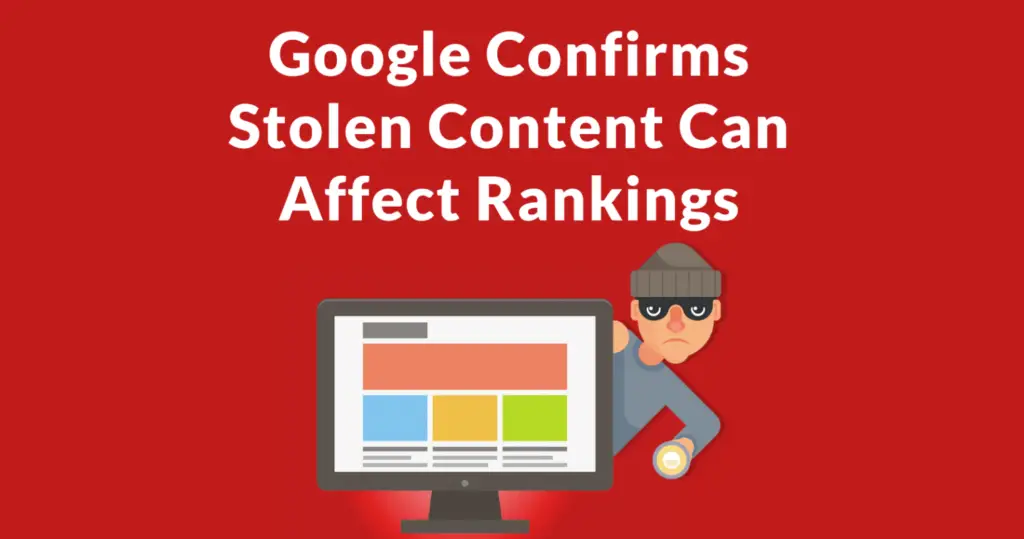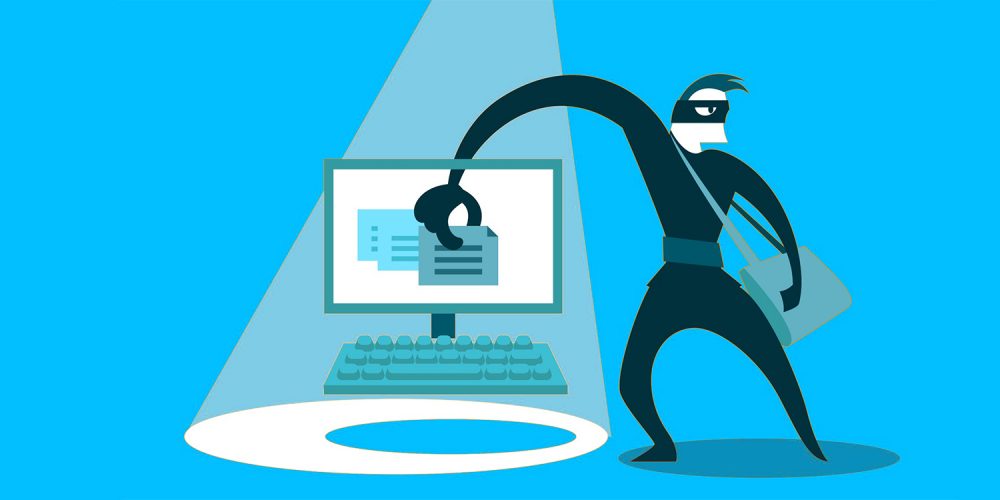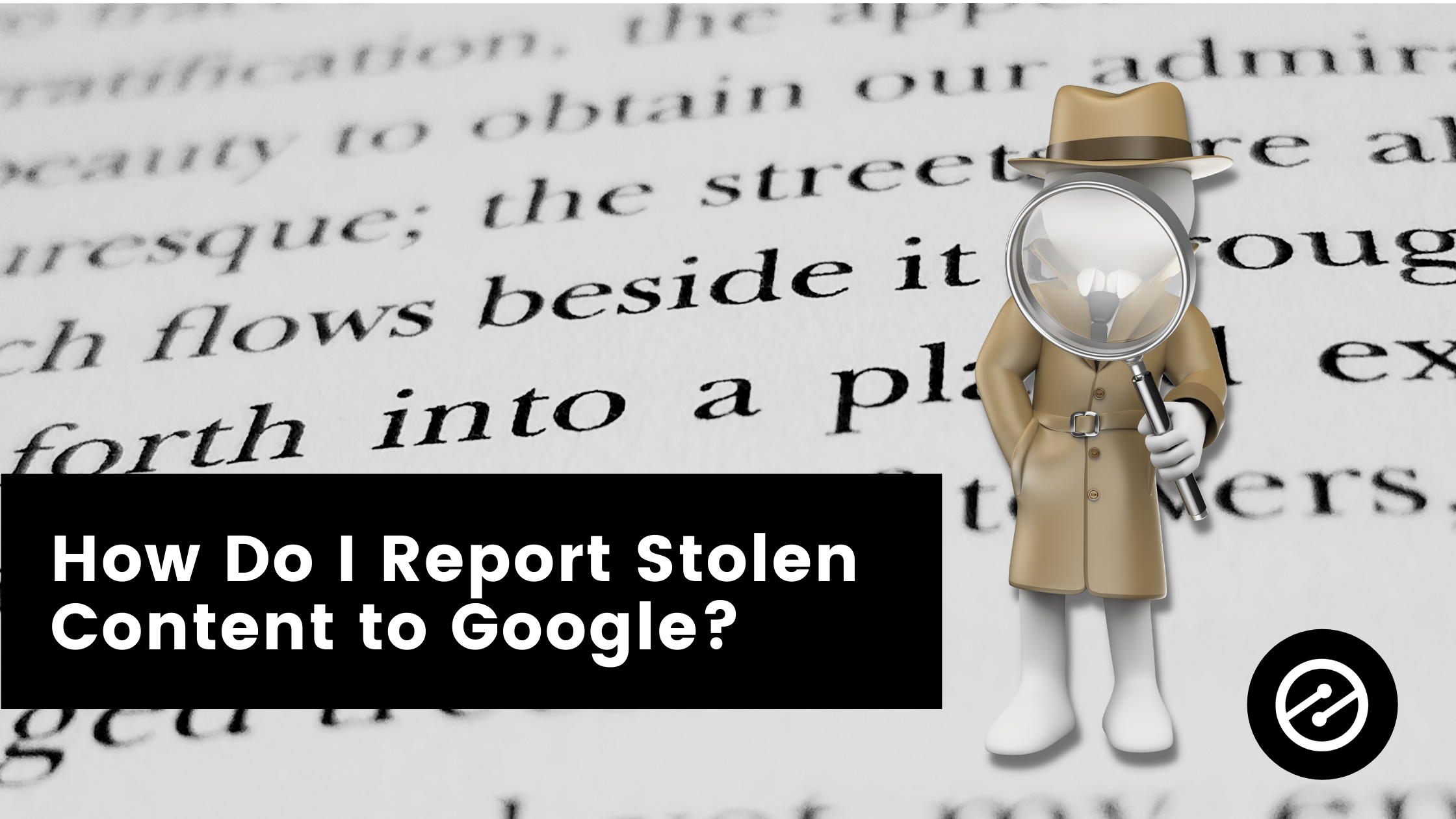The last thing a website that you have worked hard to make authoritative and engaging needs is to find its content has been duplicated elsewhere.
Yet some unscrupulous individuals, spammers, and scraper bots will think nothing of stealing whole pages of original content and blogs from your site to furnish their empty, or worse still, spammy pages.
Unfortunately, if this happens to you it can’t be ignored. Though search engines are increasingly sophisticated when it comes to discerning duplicate content, you may find that your site ends up with the blame and any penalties that might be incurred.
This means that if you find that you have had content stolen, you’ll need to know how to alert Google to the problem so your site is not negatively impacted.
Getting this sorted favourably might sound impossible, but if you act promptly and follow the steps explained below you could have a resolution to this issue within days.
In this article, we’ll look at how you can go about reporting stolen content to the search engine and how you can prevent content thieves in future.
Ready? Let’s get into this!
Don’t ignore a copied content issue
Stolen or duplicate content can be problematic for your site in many ways, but most importantly because the thieves can get off scot-free while your innocent site languishes in the rankings.
The key symptoms of a copied content issue include a nasty dip in the SERPS and being outranked by the plagiarized content.
Some website owners only become aware of a crafty duplication by being hit hard by one of Google’s algorithm updates.
Content theft can affect any site that can be read or scraped, and even if the content has a high page rank, page or domain authority and plenty of social shares, it is not immune from this adverse effect.
This is because if the stolen content is published in a more recent blog, article or webpage, the search engine bots may prioritize it as fresher despite your vintage original being right there!.
Identifying malicious non-internal examples of duplicate content is still a bit of a blind spot for Google (despite the Panda update that was actively targeting duplicate content) and the content thieves are currently taking advantage of it.

Take direct action about content theft by reporting it to Google yourself
This is not the time to be shy and retiring or take a wait and see approach.
If you are concerned that your web content is being stolen, you need to first identify the theft and then report it to Google.
It’s a good deed to the search engine because, after all, it doesn’t want to be delivering spammy copied content in its SERPs.
Let’s go through how to report stolen content to Google, step-by-step.
5 steps on how to identify and report stolen content
- Use a plagiarism checker to identify the content that has been duplicated and its source.
Grammarly and Copyscape are well-known plagiarism checkers that can scan anything from a paragraph of text to your whole website.
Any duplicate content will be identified and highlighted with the offending domain. Alternatively, you can copy and paste content from your site directly into Google to see where it is being used.
- You can reach out to the website with duplicate content, asking them to remove it.
Sometimes directly requesting that a site that has copied your duplicate content remove it, is all you need to do.
They may not be aware that the content was copied as it may have been purchased or added by the original web designer.
Providing a chance for them to put things right saves them from being penalized.
- The identified copied content can be reported to Google as a legal request under DMCA law.
Since the late 1990s, the Digital Millennium Copyright Act (DMCA) has been enacted to protect all sorts of creative content on the internet from theft.
It is on the basis of the U.S. copyright law that Google will act to tackle plagiarizers.
You report the stolen content you would like to be removed in accordance with DMCA for each Google service in which it appears.
If the content is ranked in Google search but comes from a Blogger site, you will need to make two separate requests.
- Once you have started your request, complete the requested information from Google.
This can be time-consuming but providing accurate information will help Google identify and remove the offending content more quickly.
The short Google questionnaire that you will have to complete for each Google service that is affected, includes the reason for reporting the content for removal and whether or not you are the copyright holder of the content.
- You will then progress to a further form where you can report the URLs where your content is being copied.
Check everything carefully before submitting your request.
How long does it take Google to tackle stolen content that has been reported?
Thankfully, Google is responsive, but it can take anywhere from a few days up to two weeks or more to have the stolen content removed.
Many website owners will see an uplift in their traffic as the stolen content is purged.
You can also target the offending website directly by drafting a DMCA takedown notice in the first instance and looking up the web host of the site to submit a DMCA takedown request there.
This method is often less effective though as hosts vary in their responses and interpretation of the law.
Protecting your content from theft

Thankfully, there is some great software that you can use to prevent your content from being stolen.
Many of these programs can ringfence your site content to protect it from scraper bots that scrape and steal content on the net, or continuously crawl and monitor for new instances of duplicate content.
Here are some of the available solutions.
- Copysentry by Copyscape will continually monitor the web for duplicate content from your site and will notify you by email if your web content is plagiarized.
- Google Alerts is a handy, free way of keeping tabs on instances of your unique content being used elsewhere. By setting up a Google alert for distinctive phrases or paragraphs in your text, you will be notified if someone else is using them.
- Cloudflare content protection provides a strong firewall for your site that prevents scraper bots from accessing your website servers.
- You can also add a copyright notice to your blog, which can deter some plagiarizers, or disable text highlighting or copying on your page.
Set bait to catch them!
Sometimes you need to be sneaky and get solid evidence that your content has been stolen.
If someone is literally copying and pasting entire articles, often, they do so without even reading the entire article.
One trick you can try is to add a line of text with the content.
Example: This article and its contents are owned by Carl Broadbent and was first published on xx-xx date.
You could even be more hard hitting and add something like:
Example: This article has been stolen from xxxxxxx. You have been caught stealing my content.
IF you then see this on their website you have hard evidence that your content has been copied and pasted without your permission.
Then screenshot and time stamp the image.
This evidence can then be presented to the website as a warning.
Tell them to delete all the stolen content otherwise, you will report them which could result in their website being taken down.
Final Thoughts
I’m hoping you’re reading this to educate yourself and not as a necessity as you have fallen foul of such practices.
Unfortunately, it has happened to me – twice. The first time I warned the website and they took down my content.
The second I reported to Google and the site was shut down within weeks.
It did cost me over $200, but it was a price worth paying. Hopefully these helpful tools and my own personal experience will set you up properly to deter content thieves in the future.


